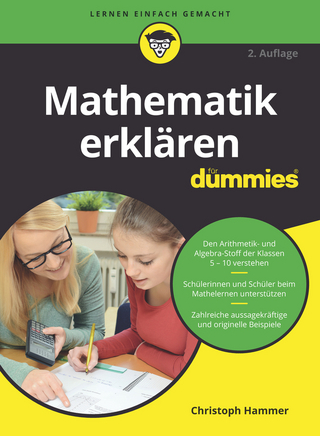
Counting on Frameworks
Mathematics to Aid the Design of Rigid Structures
Seiten
2001
Mathematical Association of America (Verlag)
978-0-88385-331-3 (ISBN)
Mathematical Association of America (Verlag)
978-0-88385-331-3 (ISBN)
Consider a scaffolding that is constructed by bolting together rods and beams. Is it strong enough to support the workers and their equipment? This is the basic problem in rigidity theory, an area of interest to a wide range of people including those studying graph theory or mathematical modelling.
Consider a scaffolding that is constructed by bolting together rods and beams. The ultimate question is whether the structure is strong enough to support the workers and their equipment. This is the problem that motivates the area of mathematics known as rigidity theory. The purpose of this book is to develop a mathematical model for the rigidity of structures. In fact the author develops three distinct models in which the structure under consideration is modelled as a framework. These models are the degrees of freedom model and two models based on quadratic equations and linear equations respectively. The author shows that all three of these models agree except for a very small class of specially constructed frameworks. This is a theory with significant practical applications and will be of interest to a wide range of people including those studying graph theory or mathematical modelling.
Consider a scaffolding that is constructed by bolting together rods and beams. The ultimate question is whether the structure is strong enough to support the workers and their equipment. This is the problem that motivates the area of mathematics known as rigidity theory. The purpose of this book is to develop a mathematical model for the rigidity of structures. In fact the author develops three distinct models in which the structure under consideration is modelled as a framework. These models are the degrees of freedom model and two models based on quadratic equations and linear equations respectively. The author shows that all three of these models agree except for a very small class of specially constructed frameworks. This is a theory with significant practical applications and will be of interest to a wide range of people including those studying graph theory or mathematical modelling.
1. Counting on frameworks; 2. Graph theory; 3. Rigidity theory; 4. History and applications; 5. Further reading.
| Reihe/Serie | Dolciani Mathematical Expositions |
|---|---|
| Zusatzinfo | 130 Line drawings, unspecified |
| Verlagsort | Washington |
| Sprache | englisch |
| Maße | 154 x 230 mm |
| Gewicht | 268 g |
| Themenwelt | Mathematik / Informatik ► Mathematik ► Allgemeines / Lexika |
| Mathematik / Informatik ► Mathematik ► Angewandte Mathematik | |
| Mathematik / Informatik ► Mathematik ► Graphentheorie | |
| ISBN-10 | 0-88385-331-0 / 0883853310 |
| ISBN-13 | 978-0-88385-331-3 / 9780883853313 |
| Zustand | Neuware |
| Haben Sie eine Frage zum Produkt? |
Mehr entdecken
aus dem Bereich
aus dem Bereich
ein Übungsbuch für Fachhochschulen
Buch | Hardcover (2023)
Carl Hanser (Verlag)
CHF 23,75


